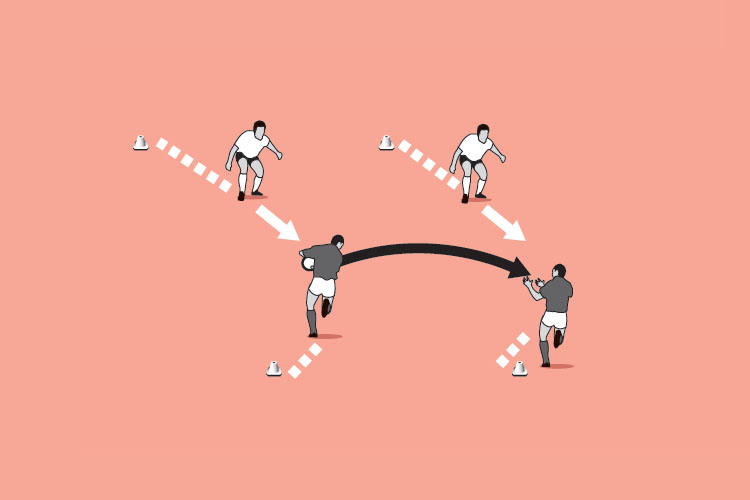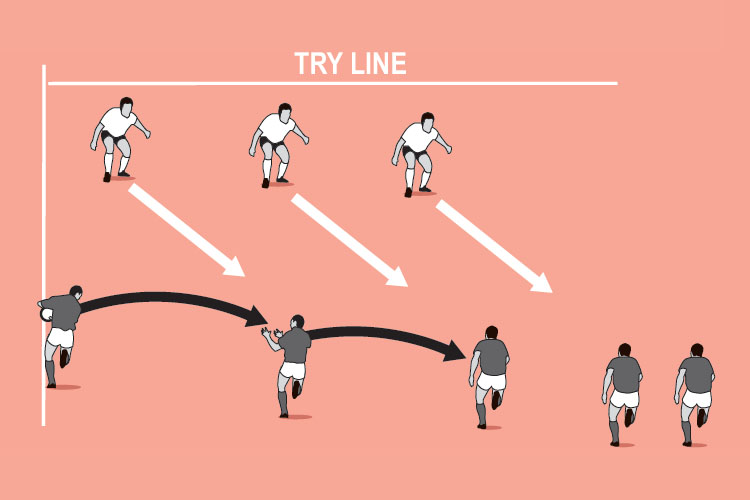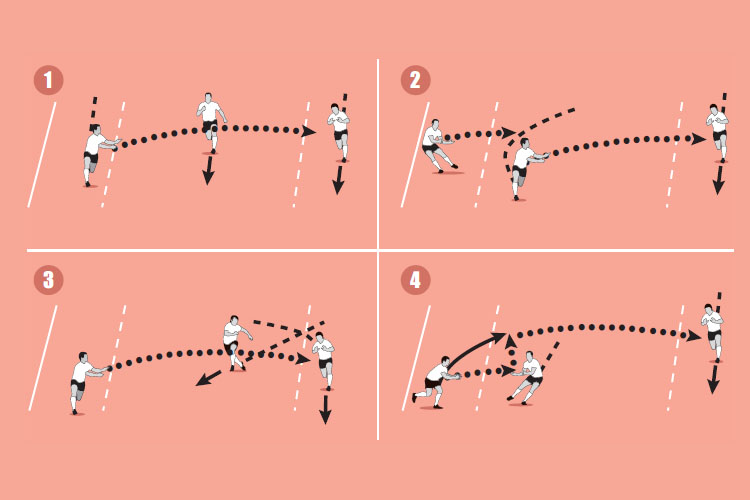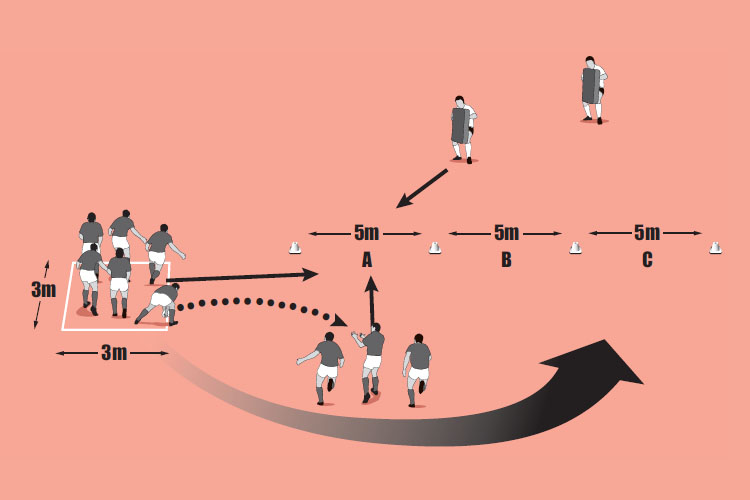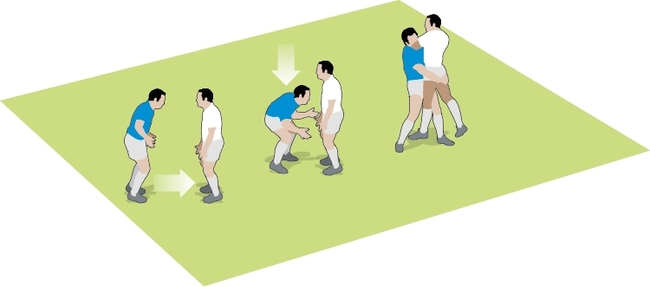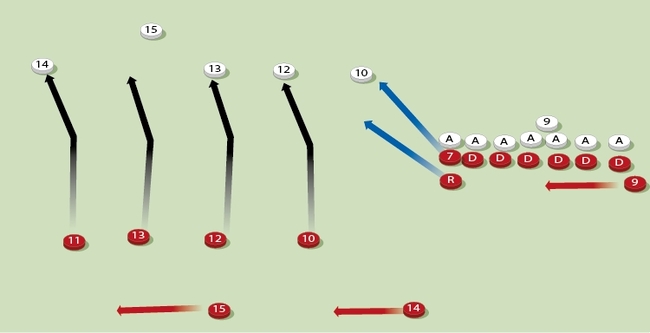Plus one tackler
Adjust your tackling system to match the new tackle Law directives. Make sure your next defender at the tackle is making a difference by arriving before the opposition, and staying on his feet. He can then put his hands on the ball to win it back or, at worst, slow down the next attack.
Warm up time: 5-7
Session time: 8-10
Development time: 8-10
Game time: 15-20
Warm down time: 5-7
What to think about
The “plus one tackler” is the next defender to the tackle situation. He is likely to be the player marking the attacker who last passed the ball. The “plus one tackler” moves forwards or sideways to the tackle and not backwards. As he arrives, it is likely the tackle will be in progress. The “plus one tackler” needs to “feel” the ball carrier to the ground, showing the referee he has released the player if necessary. He can then compete for the ball. If the tackle has taken place, the “plus one tackler” must arrive from behind the tackle to play for the ball. In all cases, if his hips go beyond his knees the player is in danger of falling forward and going off his feet, giving away a penalty.set-up
- In the defensive system, if the player you are marking passes the ball, be ready to be the first player to the tackle.
- Help get the ball carrier to the ground if you can, release him and then go for the ball.
- Stay balanced and keep your hips below your shoulders (safety and good technique).
What you get your players to do
Set up two cones about 5m apart and another two offset by about 2m. Place two defenders at one set of cones and two attackers at the other. At walking pace, the inside attacker passes to his team mate. The defenders move up and across, with the receiver going forward and being tackled. The “plus one tackler”, the defender not making the initial tackle, moves in and grabs the ball from an onside position. Increase the pace of the exercise so the defenders improve their feel of angles and body positions. Let the groups discuss their options and give feedback.Development
Using the same set up, add a touch line. Have the first attacker pass to the second attacker, who aims to beat the defence on the outside. The game is “live” and the attack must either score or retain the ball in the tackle. The “plus one tackler” must make a direct run to the breakdown. Look to see if the defence can turn over the ball or delay the presentation of clean ball. A turnover is worth three points, a delay one point and conceding a try, minus one.Related Files

Game situation
Play 5 v 3 with new defenders rotating in. Each team has five attacks. The attack start the ball 5m up one of the sides, with the defence 5m away. Play normal rugby rules, except the attack only has 15 seconds to score a try. Award five points for a try, two points if the defence concede a penalty, or minus five if the ball is turned over.What to call out
- “Cut across to the tackle”
- “Go through the ‘gate’ if you are not there when the tackle is made”
- “Be strong over the ball, with a wide base”
Newsletter Sign Up
Coaches Testimonials

Gerald Kearney, Downtown Las Vegas Soccer Club

Paul Butler, Florida, USA

Rick Shields, Springboro, USA

Tony Green, Pierrefonds Titans, Quebec, Canada
Subscribe Today
Be a more effective, more successful rugby coach
In a recent survey 89% of subscribers said Rugby Coach Weekly makes them more confident, 91% said Rugby Coach Weekly makes them a more effective coach and 93% said Rugby Coach Weekly makes them more inspired.
Get Weekly Inspiration
All the latest techniques and approaches
Rugby Coach Weekly offers proven and easy to use rugby drills, coaching sessions, practice plans, small-sided games, warm-ups, training tips and advice.
We've been at the cutting edge of rugby coaching since we launched in 2005, creating resources for the grassroots youth coach, following best practice from around the world and insights from the professional game.
